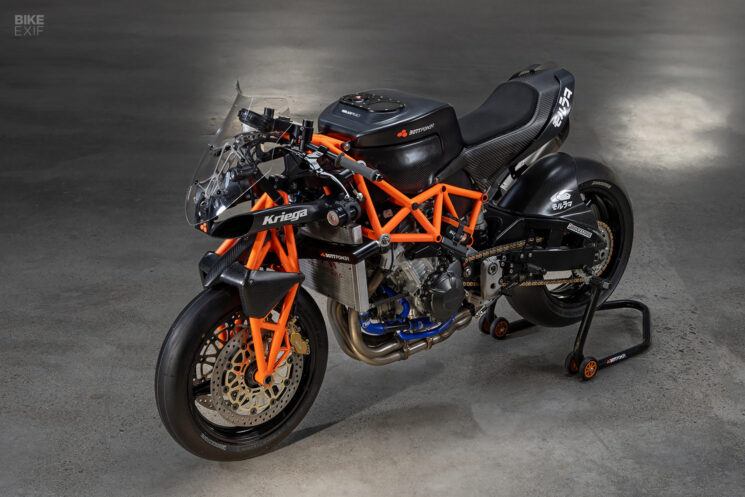
The custom scene is full of motorcycle designers, artists, mechanics, fabricators, welders, and metal-shaping wizards. But David Sánchez wears another badge that very few confidently can; engineer.
David runs the motorcycle workshop Bottpower in Valencia, Spain, best known for its gnarly Buell customs and frame kits. He’s also an experienced motorcycle racing engineer with numerous European Superbike and Supersport seasons under his belt. So that experience trickles down to the purposeful machines that he and his talented team create.
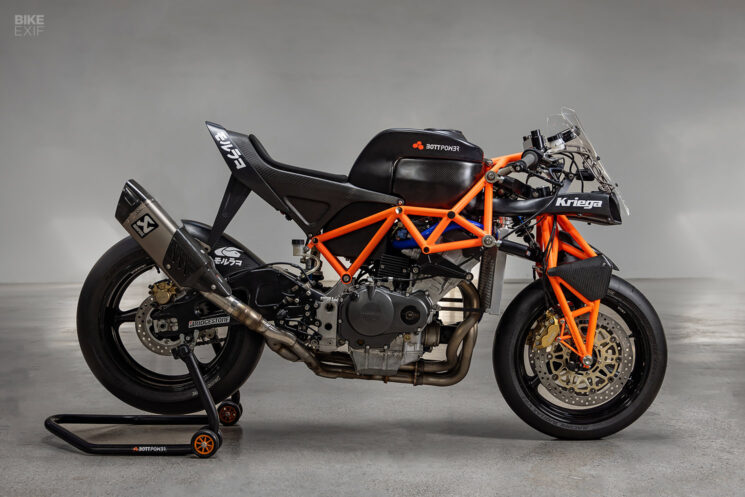
Things get even wilder when David isn’t working to a set brief or a deadline, as evidenced by this savage custom superbike. Built from the bones of a Honda CBR954RR Fireblade, this Bottpower special features a bespoke chassis, a unique front suspension system, and miles of carbon fiber. It’s also taken David two decades (plus change) to bring it to life.
The project kicked off in 2002 with a brand new Honda CBR954RR Fireblade and a very specific concept. Together with Bottpower co-founder and experienced automotive designer, Hugo van Waaijen, David envisioned a bike with a trellis frame to suspend the motor from, a unique front suspension system, and an exposed airbox and fuel tank.
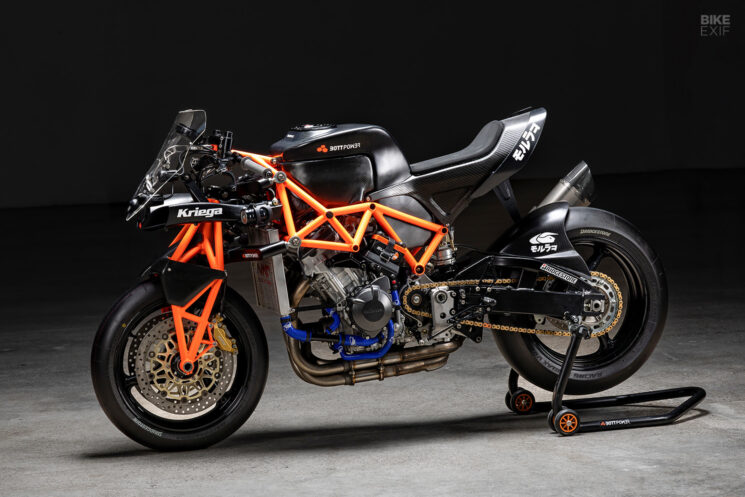
Using just the Fireblade’s engine, wheels, and swingarm, the duo designed the foundation for the motorcycle you see here. But as soon as the rolling chassis was complete, the project stalled for reasons unknown.
“The bike sat disassembled for many years, gathering dust,” David tells us. “In fact, a few years ago I considered selling off any valuable parts and forgetting about it. The thing is, when we started this project, we had very little experience with bikes—and if we were to build this type of bike now, we would do everything very differently.”
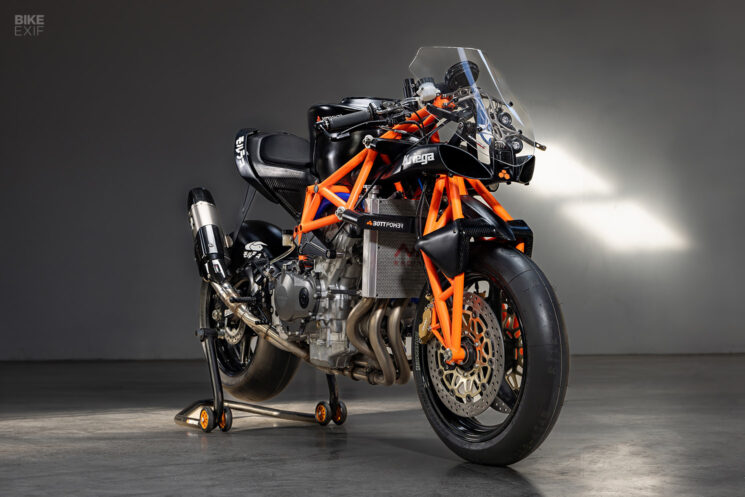
“Fortunately, we ultimately decided to finish this version before creating a new one. Now that I see it completed, I’m glad we made that decision.”
We’re glad too. It might have taken David and Hugo 21 years to get this one over the finish line, but it certainly doesn’t look dated. It’s a sharp machine that deliberately leaves very little to the imagination by putting its myriad technical features on full display.
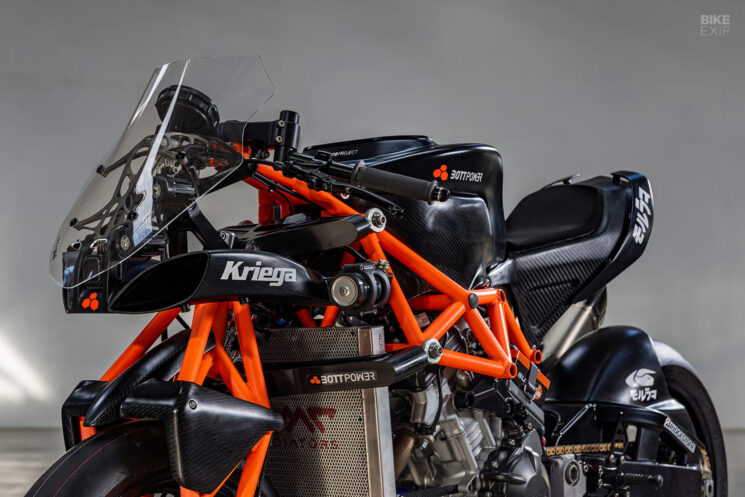
The Hossack-like front suspension example alone is worthy of further study. “It’s similar to a Hossack design,” David points out, “but it has some differences, like the suspended steering head—an idea from Hoyt McKagen. “This design allows us to use bearings in the steering head instead of the typical ball joints used in the Hossack system.”
“The advantage is that bearings have a much lower friction coefficient and also allow for a greater steering angle. The front end is designed to dive considerably less than a telescopic fork (and the dive level is adjustable). This leaves us with extra travel for the suspension to work during braking, and it also improves braking ability because the rear wheel maintains better contact with the asphalt.”

Moving to the trellis frame that forms the nexus of the bike, David explains that the goal here was to optimize size and weight. “We wanted to create a chassis that was much narrower and lighter than the original Honda frame, along with a much narrower fuel tank in the area between the legs. Essentially, our idea was that once you’re on the bike, it should feel like a 600 rather than a 1000.”
Hiding under the swathes of carbon fiber is a fuel ‘bladder,’ built for this project out of composite materials by Pyrotect in the US. It’s the same type of system that’s used in race cars, capable of withstanding big impacts and fires. The tank covers, airbox, intakes, and fenders were all 3D printed by Optimus3D in Spain, and then covered in carbon fiber to add structural strength.
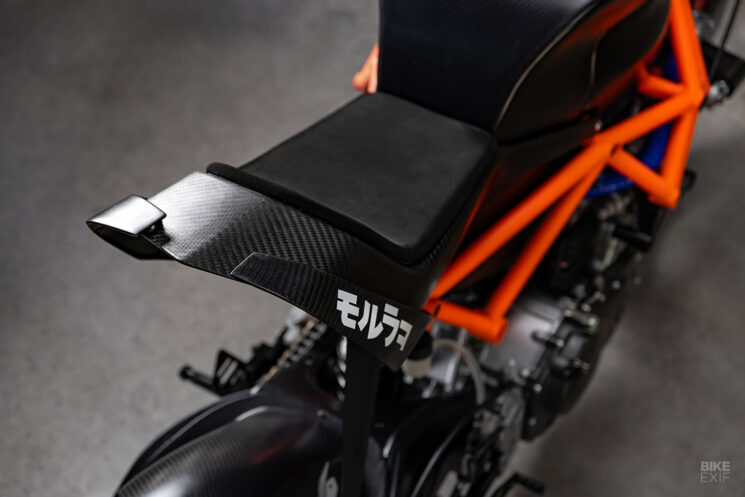
There’s no subframe as such—instead, the carbon fiber tail section supports itself. It also weighs a paltry 800 grams, which is impressive enough to forgive the minimal seat padding.
At the opposite end of the bike, a small windshield is held in place by a 3D-printed titanium bracket. It has an organic look that seems at odds with the rest of the build, but that’s entirely deliberate. Bottpower designed it digitally using topology optimization—a mathematical method that optimizes the distribution of material, based on factors like space and how much load the part needs to sustain.
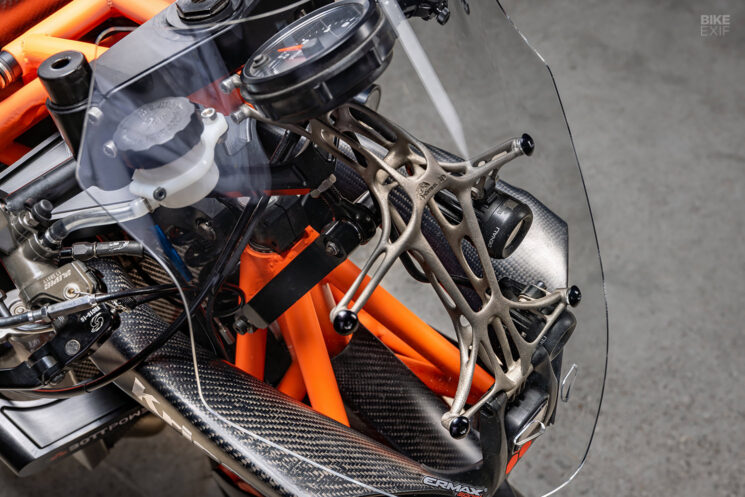
A ton of work also went into the bits that you can’t see. The bike features an all-new electrical system, complete with a data acquisition setup. A small Lithium-ion battery sits on the side of the bike, placed right next to the starter motor to eliminate the need for any superfluous wiring.
The custom-made housing that contains it also hosts the ignition and start buttons, and the fuses. With no other switches required, the cockpit wears little more than a set of clip-ons, the brake and clutch levers, and an analog tachometer. Rounding out the list are a pair of custom-made shocks from TFX Suspension in The Netherlands, and an Akrapovič muffler to complement the Fireblade’s titanium exhaust headers.
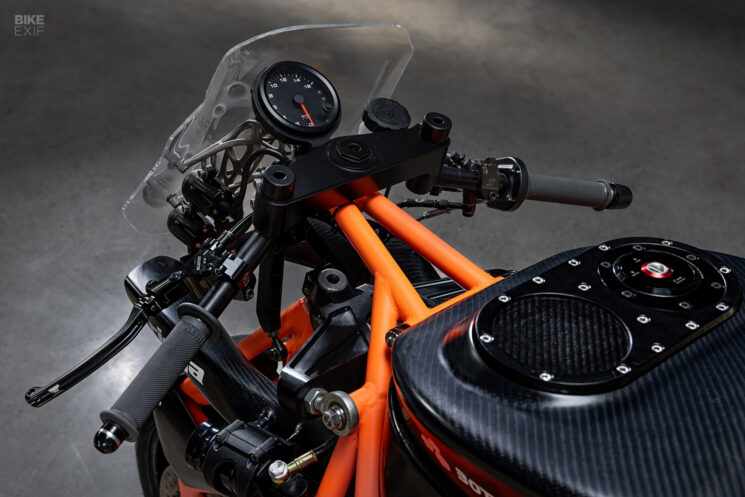
Appropriately dubbed ‘Morlaco’ (translated as ‘large fighting bull’), Bottpower’s Honda-powered superbike is as intoxicating as it is audacious. If you agree, you’ll be glad to know that plans are already underway to build a worthy successor.
“We’re initiating a small testing program,” David explains, “to work on developing and fine-tuning the front end and to gather information for developing the next version, which we want to build with a modern engine. It will be interesting to apply all the experience we’ve gained over these two decades and see the differences between this bike and the next one, which we hope to complete in two years and not twenty!”
Bottpower | Facebook | Instagram |Images by Moonbay Films

from Bike EXIF https://ift.tt/j9pqlZ5
No comments:
Post a Comment